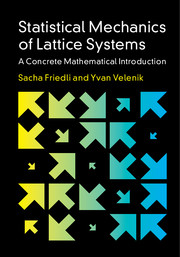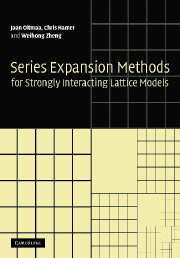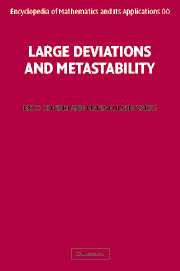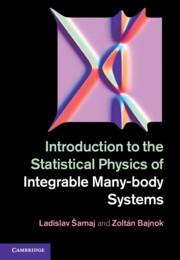Statistical Mechanics of Lattice Systems
This motivating textbook gives a friendly, rigorous introduction to fundamental concepts in equilibrium statistical mechanics, covering a selection of specific models, including the Curie–Weiss and Ising models, the Gaussian free field, O(n) models, and models with Kać interactions. Using classical concepts such as Gibbs measures, pressure, free energy, and entropy, the book exposes the main features of the classical description of large systems in equilibrium, in particular the central problem of phase transitions. It treats such important topics as the Peierls argument, the Dobrushin uniqueness, Mermin–Wagner and Lee–Yang theorems, and develops from scratch such workhorses as correlation inequalities, the cluster expansion, Pirogov–Sinai Theory, and reflection positivity. Written as a self-contained course for advanced undergraduate or beginning graduate students, the detailed explanations, large collection of exercises (with solutions), and appendix of mathematical results and concepts also make it a handy reference for researchers in related areas.
- Builds a narrative around the driving concepts, focusing on specific examples and models
- Self-contained and accessible
- Features numerous exercises and solutions, as well as a comprehensive appendix
Reviews & endorsements
'Rigorous Statistical Mechanics has a long tradition, starting in the 1960s with Dobrushin, Lanford, Ruelle, Sinai and many other mathematical physicists. Yet, surprisingly, there has not been an up-to-date textbook on an introductory level. This gap is bridged masterly by the present book. It addresses the curious newcomer by employing a carefully designed structure, which starts from a physics introduction and then uses the two-dimensional Ising model as a stepping-stone towards the richness of the subject. The book will be enjoyed by students and researchers with an interest in either theoretical condensed matter physics or probability theory.' Herbert Spohn, Technische Universität München
'An excellent introduction to classical equilibrium statistical mechanics. There is clear concern with the understanding of ideas and concepts behind the various tools and models. Topics are presented through examples, making this book a genuine 'concrete mathematical introduction'. While reading it, my first wish was to use it as soon as possible in a course. It is a 'must' for the libraries of graduate programs in mathematics or mathematical physics.' Maria Eulália Vares, Universidade Federal do Rio de Janeiro
'This book is a marvelous introduction to equilibrium statistical mechanics for mathematically inclined readers, which does not sacrifice clarity in the pursuit of mathematical rigor. The book starts with basic definitions and a crash course in thermodynamics, and gets to sophisticated topics such as cluster expansions, the Pirogov-Sinai theory and infinite volume Gibbs measures through the discussion of concrete models. This book should be on the bookshelf of any serious student, researcher and teacher of mathematical statistical mechanics.' Ofer Zeitouni, Weizmann Institute, Israel
'Sacha Friedli and Yvan Velenik have succeeded in writing a unique, modern treatise on equilibrium statistical mechanics. They cover many fundamental concepts, techniques and examples in a didactic manner, providing a remarkable source of knowledge, grounded and refined by years of experience. Stimulating and appealing, this book is likely to inspire generations of students and scientists.' Francis Comets, Université Paris Diderot
'The authors have created an impressive book that shows its strengths in several ways: thoughtful organization and a well-designed presentation, real attention to the needs of the reader, and a very nice guide to the existing literature. It could be a model of how mathematical physics should be presented.' Bill Satzer, MAA Reviews
Product details
November 2017Hardback
9781107184824
640 pages
253 × 180 × 35 mm
1.25kg
Available
Table of Contents
- Preface
- Convention
- 1. Introduction
- 2. The Curie–Weiss model
- 3. The Ising model
- 4. Liquid-vapor equilibrium
- 5. Cluster expansion
- 6. Infinite-volume Gibbs measures
- 7. Pirogov–Sinai theory
- 8. The Gaussian free field on Zd
- 9. Models with continuous symmetry
- 10. Reflection positivity
- A. Notes
- B. Mathematical appendices
- C. Solutions to exercises
- Bibliography
- Index.





